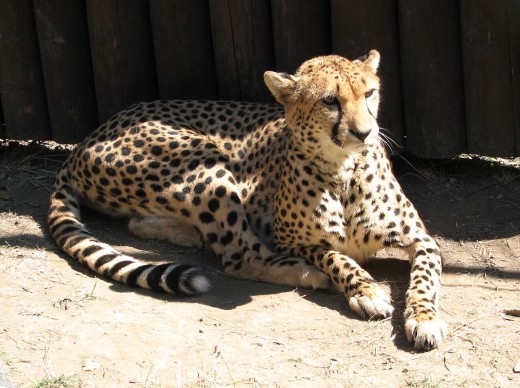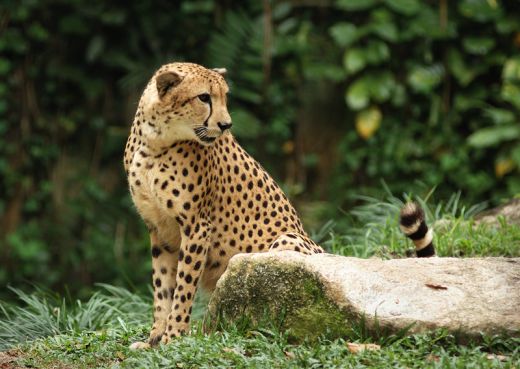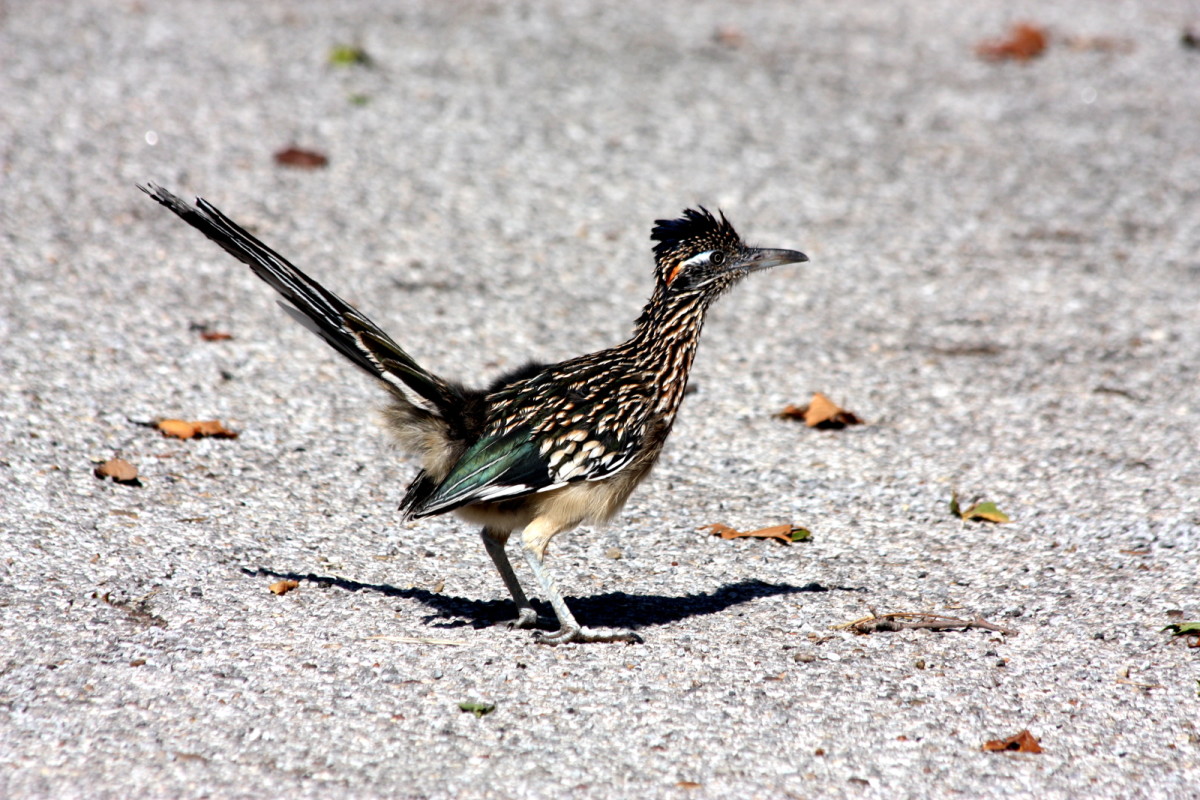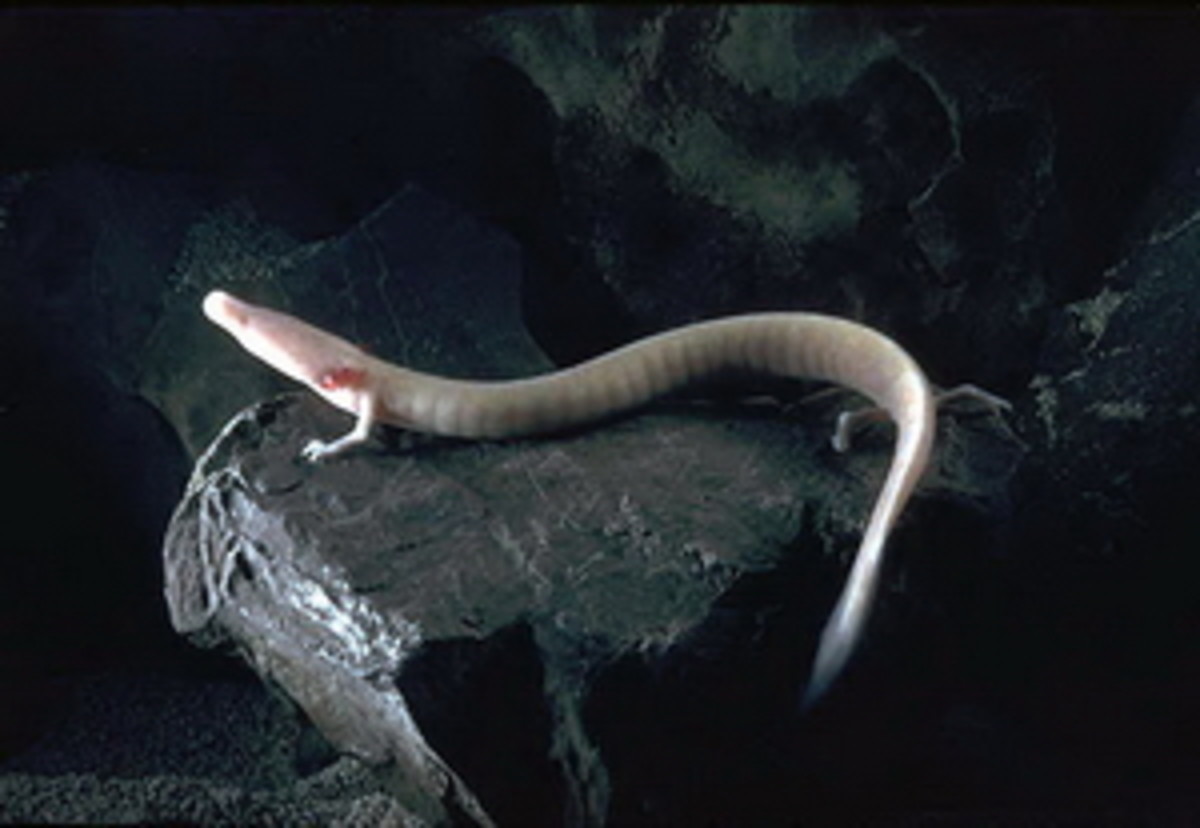Cheetah
Scientific Name: Acinonyx jubatus
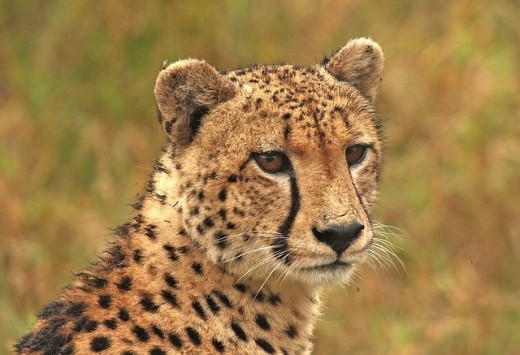
Description
As members of the feline family, the Cheetah has a type of prestige. They are noted as being very elegant in their movements. They are also the fastest of all animals on land. They have a very long tail that they use to help them with balance. They also have small ears and long thin legs. The most interesting thing of them is that they have unique looking spots on their golden bodies. These spots are different for each of the as no two are exactly alike. The colors of their fur allows them to blend into the surroundings in their natural environment.
More Cheetah Facts
- Cheetah Facts
Cheetah Facts and Information. Feeding, habitat, distribution, reproduction, anatomy and more.
Anatomy
The body of the Cheetah really is amazing. They are fast animals – the fastest of all on land. They have a spring like spine that makes it possible for them to gather lots of movement with their back legs. They also have small skulls and teeth yet they have a very powerful locking jaw. They can run up to 75 miles per hour but only for very short periods of time.
They have amazing vision that allows them to see their prey from very far distances. Even though they have large nasal passages they don’t rely very much on scent to find prey. What purpose do those large nasal passages offer then? It is believed that they allow huge amounts of oxygen to be taken in at once when they are moving at top speeds.
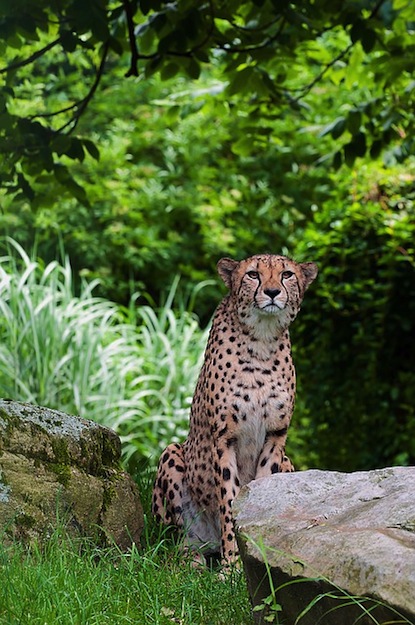
Interesting Links
- Amazing Animal Facts
Amazing Animal Facts - The Portal of Animal Diversity. Visual index of animals. Dolphins, Whales, Penguins, Sharks, Tigers, Elephants, Flamingos, Otters, Killer Whales, Seals, Sea Lions, Sea Turtles, Polar Bears, Walruses, Squids, Manatees, Snails, G - Giraffe Facts and Information
Giraffe Facts and Information. Feeding, habitat, distribution, reproduction, anatomy and more. Facts about Giraffe Species and conservation - Rhinoceros Facts and Information
Rhinoceros Facts and Information. Feeding, habitat, distribution, reproduction, anatomy and more. Facts about the Black Rhinoceros, the Javan Rhinoceros, the White Rhinoceros, among others and the conservation efforts made to preserve rhinoceros
Evolution
There are many uncertainties when it comes to evolution and the Cheetah. Due to the fact that they don’t do well adapting to new environments it is believed that not much has changed for them over millions of years. They may have been larger at one point though and even had thicker hair in order to survive during the Ice Age.
Fossil remains that can be dated back 26 million years though show that these animals have been on the Earth for a very long time. They originated in Africa and then moved into both Asia and India. The remains in Asia are approximately 11 million years old which shows that they may have moved that direction when the world was covered with ice.
Behavior
The behavior of the Cheetah is something that has been carefully studied. They have the ability to purr and will do so frequently when they are content with their environment. This particular feline doesn’t have the vocal ability to roar. They don’t do well to changes so they can suffer from high levels of stress, starve if they don’t have enough food in their environment, and they can be very aggressive when they have to be.
When you see a small group of Cheetahs they are going to be all males. They will stay with their sibling brothers once their mother leaves and the sisters have also moved on. When you see a lone Cheetah it is a female. However, she can be with a male during times of mating and when she has her young cubs to take care of.
They are quite active during the morning hours when the sun is coming up. They will likely go look for food at that time. As the heat of the day comes along they will find places where they can rest. They do their best to stay out of the sunlight and to be undetected by predators. They will become active again as the sun is setting and start to look for food again.
Cheetah Video
Habitat and Distribution
All of the Cheetah that used to naturally live in India have been wiped out. However, there are efforts in place at this time to introduce them to such locations again. It is believed that the population of other animals there could benefit as well. Many of them such the antelope are overpopulated so starvation is very common.
There are some areas of Asia where you will find the Cheetah living. However, that habitat has quickly become much smaller than it used to be due to human actions. The largest number of remaining Cheetah are found in Africa. They don’t do well in captivity but due to their endangered status they are often kept in zoos and sanctuaries.
You may be surprised to learn about the different habitats where the Cheetah is known to live. They can be out there on the plains as well as in the tall grasses. They also live in the rainforests and in the mountain regions. Anywhere that other animals they may feed upon can live they too will be surviving.
Interesting Links
- Facts about Crocodiles, Alligators, Caymans
Crocodile. Alligator and Caiman Facts and Information. Feeding, habitat, distribution, reproduction, anatomy and more. Facts about the Nile Crocodile, the Saltwater Crocodile, the Black Caiman, the American Alligator among others and the conservation - Deer Facts and Information
Deer are ruminant mammals belonging to the family Cervidae. This family classification include well known animal like the Moose, Red Deer, Reindeer, Roe and Chital among others.
Diet and Feeding Habits
The Cheetah never passes up an opportunity to eat as their survival depends on having enough strength. When they do get food they will eat of it heartily until it is gone or they are interrupted by other animals. They will leave their food source for other animals so that they can flea without the risk of being harmed. They will very rarely engage in any type of conflict with other animals.
Even though the Cheetah is extremely fast they only capture about one half of the prey they go after. They won’t continue to chase it for more than a minute. It is believed this helps them to conserve energy. They also won’t go after animals that can cause them serious injury.
Cheetah Video
Reproduction
Mating is possible for the Cheetah during any time of the year. They tend to reproduce at slow rates though. The males have low sperm count so not all mating will result in young being created. The genetic profile of them is extremely similar too which can create problems with inbreeding. The females can give birth to up to 9 cubs after carrying them for a period of 90 to 100 days.


- Facts about Pollution | Effects of Pollution
Pollution Facts and Information. Effects of Pollution in the Environment
Predators
Even when a litter of cubs has high numbers the mortality rate has to be factored in. Only about 10% of them will become adults. There are many known predators including other felines, wild dogs, and the eagle. They will consume the young Cheetah while their mother is away looking for food. She will hide them before she goes but there is a good chance they won’t remain when she comes back to them.
Full sized Cheetahs have very little problems in the wild though with various predators. They blend in well with the surroundings and they will avoid conflict most of the time. They do have serious problems though due to the actions and behaviors of humans. For too many years they were hunted for their gorgeous furs. The use of fur coats by upper class has diminished but their numbers never recovered.
The fact that the Cheetah has a smaller home range now than ever before is a threat to their survival. They have a harder time finding sources of food for them to survive. They are also competing with other meat eating animals for those few meals. This can result in them turning to the animals ranchers have in the area.
When that occurs though most ranchers will kill them with shotguns or leave poisoned meat out for them to consume. There are some conservation efforts in place for the Cheetah. However, they continue to be in serious danger of extinction.

